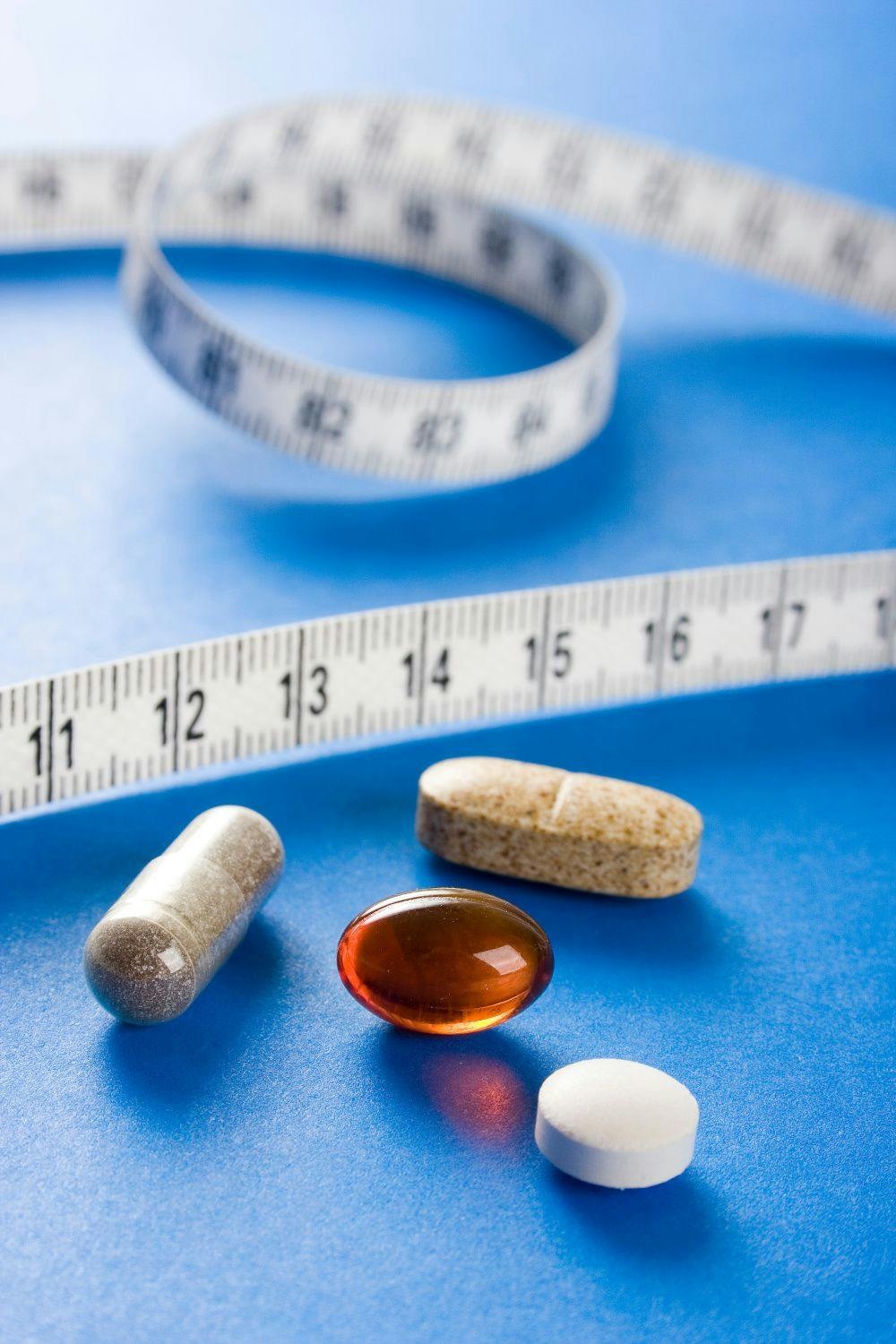Practice makes perfect: Nutraceutical firms use R&D-scale equipment to perfect products and innovate new ones
Here’s why more health and wellness product companies are investing in R&D-scale equipment.
© Patrick / Stock.adobe.com

By the time a nutraceutical or any other health and wellness product hits full-scale manufacturing, the production process has been thoroughly ironed out to ensure the utmost precision, quality, and efficiency. To do that fine-tuning, engineers use R&D equipment.
“R&D-scale equipment is critical for companies for many reasons,” says Erin Dillon, media and marketing coordinator at Charles Ross & Son Company (Hauppauge, NY), an original equipment manufacturer (OEM) specializing in mixing, blending, and dispersion equipment.
First off, of course, R&D equipment helps troubleshoot any production problems, maximizing output while minimizing cost and waste. “For example,” Dillon says, “R&D mixing equipment allows companies to refine processes and recipes through exhaustive and iterative testing but using minimal amounts of raw materials.”
In the case of tablets, R&D equipment plays an integral role in material characterization and scaling up the ideal formulation, says Frederick Murray, president of tablet-press technology producer Korsch America Inc. (South Easton, MA). “Critical process parameters—tablet hardness as a function of compression force—is critical to understand at the development stage so that the process may be optimized at the production scale.” Also, he says, “Optimizing formulations, the flow properties of the material to achieve consistent tablet weight control at high speeds, the pre- and main compression parameters to achieve optimal tablet hardness, and the lubrication in the formulation to minimize ejection forces—all of this work is critical to ensuring success at the production scale.”
The takeaway? “Understanding the behavior of the material and defining optimal process parameters always pays dividends and should be considered a prerequisite for successful production,” he advises.
Once that’s done, R&D equipment can help validate the process. “This is required to ensure manufacturing processes are consistent, reproducible, and meeting quality standards,” says John Carey, vice president of sales at ACG Engineering (Piscataway, NJ). Capital investment in R&D equipment “can also help companies minimize risks and ensure that their products are market-ready before investing in full-scale production,” he adds.
Dillon makes another point—that “R&D-scale equipment helps companies comply with regulatory requirements. It enables them to perform the necessary testing and validation before launching new products, ensuring they meet regulatory standards and avoid any compliance issues.”
And perhaps what’s most exciting? R&D equipment lets companies test new ideas early on. “It provides a controlled environment where they can experiment and test out new ideas before committing to full-scale production,” she says.
With R&D machinery, “The main motivation is to develop and test new products, which enables companies to remain at the forefront of their product offerings,” Carey says. “Having cutting-edge equipment allows them to develop new product offerings, formulations, optimize processes, as well as to test product stability and shelf-life.”
“It is important to note,” he adds, “that dedicated R&D equipment allows this to be undertaken without any interruption to the day-to-day manufacturing operations.”
Simply put, R&D equipment helps companies remain nimble in the face of consumer demand. As Carey explains, it enables them “to respond faster to changing customer needs and to support new product formulations, such as targeted delivery through sustained or delayed release. This is helping them to remain at the forefront of the industry and to continually deliver quality health products to their customers.”
Making the Investment
More companies are seeing the value of R&D technology and investing in it. “We are currently witnessing a significant number of companies that traditionally outsourced different aspects of manufacturing through contract research organizations (CROs) now investing in R&D equipment—for example, the QUEST series from ACG—to bring these capabilities in house,” Carey says.
Stan Matthews agrees. Matthews is director of sales, processing division, at MG America (Fairfield, NJ), a supplier of capsule fillers, tablet presses, and a range of other processing and packaging equipment. It is a subsidiary of MG2 (Bologna, Italy). “Yes,” says Matthews, “we see a broad array of nutritional companies using R&D equipment to help develop products and to improve the manufacturing process.” The investment is worth it, though, “as the R&D scale-up equipment requires less product for development and testing, which in turn saves on product cost.”
Dillon says Ross sees the same happening on the mixers side. Today, she says, “It’s common for companies to have a suite of basic lab-scale mixing equipment: benchtop high-shear mixers and dispersers for low-viscosity emulsions and slurries; small ribbon blenders or tumble blenders for dry powder recipes; and planetary mixers for thick pastes and doughs.”
OEMs at Your Service
Today’s OEMs offer a suite of not only commercial production equipment but R&D production equipment.
“Many companies offer R&D equipment ranging from pilot scale through to full production machinery, as well as the associated services to support the technical transfer to manufacturing-scale process,” Carey says.
Matthews says, “Typically, manufacturers use R&D equipment for development and then transfer the technology to the same equipment manufacturers’ production-scale equipment.”
In fact, Carey warns, when evaluating R&D equipment, a “fundamental consideration” should be “whether the supplier has the ability to deliver and support production-scale equipment for any product or process developed on the R&D platform.”
An OEM who knows what a company will need at both ends of production is invaluable. For instance, in terms of mixers, Dillon says, “Scaling up from a laboratory or pilot plant operation requires that the physical and chemical properties of the product are duplicated at the full-scale plant level. The desired outcome must also be produced within a reasonable amount of time.”
You’ll want to consider the following, she says: “1) Maintain tip speed and agitator geometry. Account for longer mixing and heating times due to the unavoidable decrease in surface area–to–volume ratio and/or per-unit volume. 2) To obtain reliable data for scale-up, a good rule of thumb is to test on a mixer that is no smaller than 10% of the capacity you are looking to scale up to. 3) Determine the quantity of full and partial batches that can be made on a particular mixer model to accommodate fluctuations in product demand.”
When it comes time to move up to commercial scale, experts guide companies on their way. For instance, in the tablet-press world, “A mid-range tablet press (16-30 stations) can be used for product scale-up to permit an assortment of the product performance at higher speeds,” says Korsch’s Murray. “An instrumented press will permit optimization of precompression and main compression forces, and ejection forces over extended batch production. Advanced tablet presses offer full production controls—including electronic audit trail, press force control, single-tablet rejection, and a product recipe capability to fully characterize production and streamline the tech transfer to production scale. In addition,” he says, “compaction simulators also offer the ability to predict tablet performance at high speeds using minimal material quantities.”
The experts in this story advise companies to work with an experienced OEM because, as Dillon notes, “Even in ideal circumstances, scale-up will require some degree of tweaking to optimize your process in a larger volume.” Fortunately, Ross offers its customers an array of R&D support through its Test and Development Center, where the company’s experts can help with equipment selection, process recommendations, and optimization. The company also offers rental equipment to help customers with “urgent projects and short-term campaigns,” she says.
“A competent supplier with established equipment designs and experience should be able to confidently recommend and supply R&D-scale, pilot-scale, and production-scale mixing equipment,” she concludes.
And when they are designing R&D equipment, they know what their customers are looking for. Robustness and ease of use are key, Dillon says. Also, she points out, “With the ever-changing demands of the market, they need equipment that can quickly adapt to different projects and formulations.”
Carey says the same. “Companies are looking for R&D machinery that is versatile, efficient, and reliable. The machinery needs to effectively support their product development processes, improve on quality, and deliver new products to market faster and more efficiently. As a result, they want machines that can handle various formulations and processes while providing accurate and repeatable results.”
“Additionally,” he adds, “companies are looking for machines that can be easily integrated into their existing processes and workflows, ensuring they can respond to market demands more easily.”
And it’s important to note that the R&D equipment itself is getting more high-tech. For instance, Carey says, the machinery is becoming more automated and able to provide real-time data and analysis.
In mixing and processing equipment, the main advancements have been in controls, Dillon says. “New software, programmable logic controllers (PLCs), and user interfaces are being adopted to optimize production reduce costs, increase service life, and improve operator safety,” she notes.
Over in tablet presses, Murray says, “One major advancement is the ability to leverage the predictive prowess of compaction simulators for material characterization and product scale-up. Other new advancements in small-scale and mid-range tablet presses include flexible designs that produce tablets of all shapes, sizes, and formats (single- or multilayer) as well as advanced control systems comparable to those used for full production scale. These offer far more insight into the process and a solid basis for product development, optimization, and scale-up.”
And Matthews at MG America notes that “Equipment manufacturers are developing R&D machines that offer high-level feedback on how the product is behaving, as well as how it will perform in the production environment. This insight is invaluable amid efforts to optimize production and maximize quality and output.”
Equipped for the Future
Like any good investment, the up-front costs of R&D and pilot equipment are daunting but pay off in the long run. As more complex, sophisticated products hit the health and wellness space, figuring out the best production processes early on and how to scale those up becomes increasingly critical.
As Dillon says, “Investment in R&D-scale equipment goes a long way towards quickly meeting customer demands, outpacing competitors, improving product quality, and identifying cost-saving opportunities.” She concludes: “While investing in R&D-scale equipment can be a significant expense, it brings many long-term benefits, including the ability to constantly innovate, improve efficiency, reduce waste, and ultimately achieve business goals.”

Prinova acquires Aplinova to further increase its footprint in Latin America
April 7th 2025Prinova has recently announced the acquisition of Brazilian ingredients distributor Aplinova, which is a provider of specialty ingredients for a range of market segments that include food, beverage, supplements, and personal care.

























